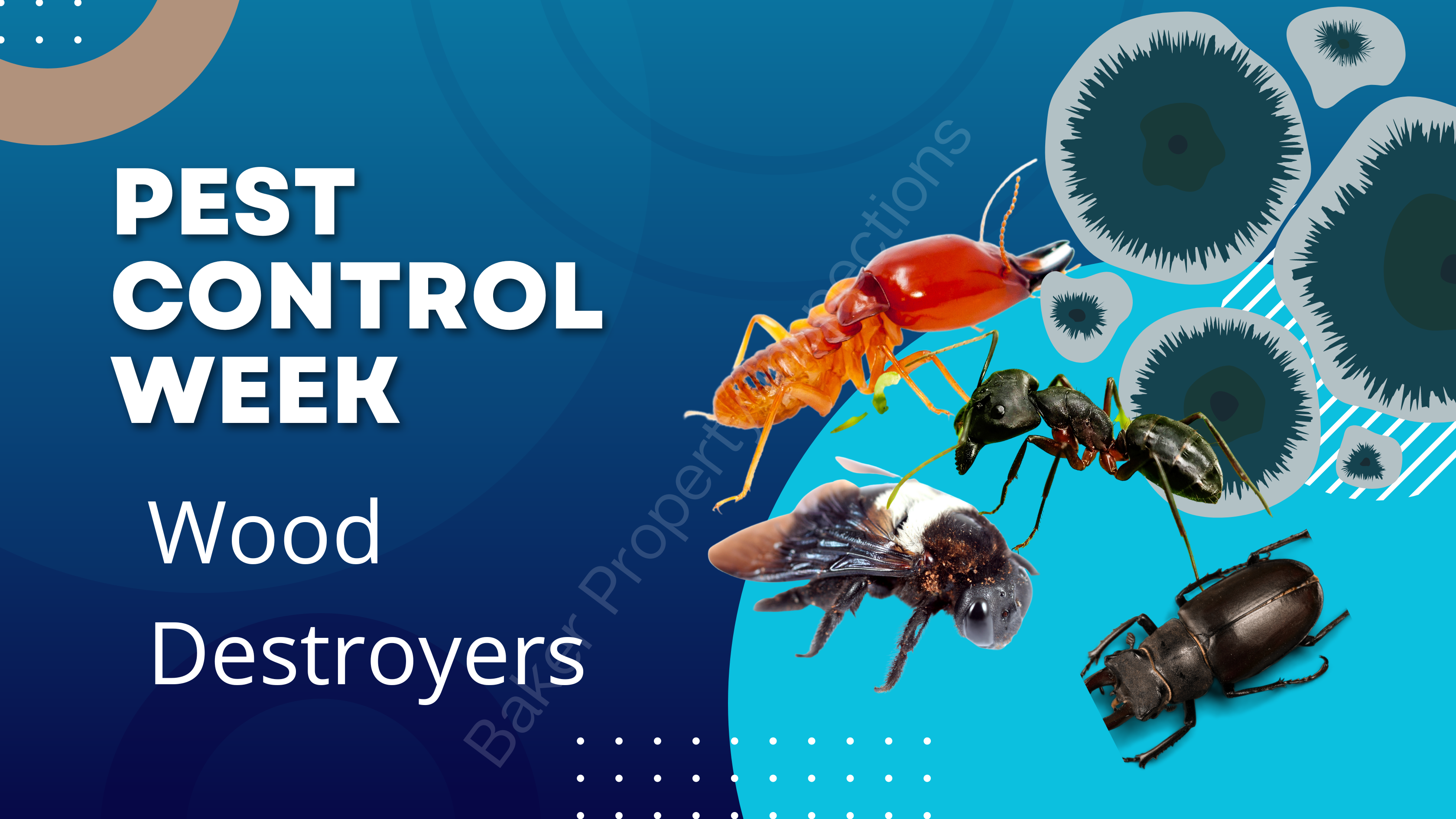Wood destroying organisms can take the house right out from under you. Wood destroying organisms pose a threat and, unfortunately, it often goes unnoticed until significant damage has occurred. A multitude of unsuspecting homeowners are often oblivious to these silent attackers, jeopardizing their home’s structural integrity, health, and safety. As a professional inspector, I frequently encounter evidence of these invasive organisms during my inspections. This edition of Pest Control Week is dedicated to identifying the main threats Michigan homeowners face from wood destroying organisms and how to combat them:
Termites: Termites pose a significant threat to homes and other wooden structures in Michigan. As an inspector, I’ve seen how these voracious creatures consume cellulose in wood, significantly reducing its strength and stability. Drawn to damp locations and ready food sources, they particularly relish softwoods due to their higher cellulose content. Although treated lumber is less attractive to termites, it’s not completely immune to termite damage. Learn more about termites here: https://www.epa.gov/safepestcontrol/termites-how-identify-and-control-them
Powderpost beetles: This particular beetle species poses a significant threat to hardwoods. The females lay their eggs in wood, and upon hatching, the larvae bore through the wood, creating a network of tunnels and leaving behind tiny holes (source). Powderpost beetles are often linked to older lumber practices that didn’t use kiln drying or chemical treatments, hence they’re more frequently encountered in homes with older framing members. Learn more about these pests here: https://entomology.ca.uky.edu/ef616
Carpenter ants: Unlike termites, carpenter ants don’t eat wood but excavate galleries within the wood for nesting, leading to substantial structural damage. Learn more here: https://www.pestworld.org/pest-guide/ants/carpenter-ants/
Carpenter bees: Similar to carpenter ants, carpenter bees bore into wood to create nesting galleries. Over time, their relentless activity weakens the wood (source). Moreover, they are territorial, and both the bees and their larvae tend to return to the same locations. Their activities, coupled with those of birds preying on their larvae, expose the wood to further damage due to increased moisture exposure. Learn more: https://www.canr.msu.edu/resources/carpenter-bees#:~:text=Carpenter%20been%20
Wood decay fungi: Often overlooked but equally destructive, wood decay fungi feed on the cellulose and lignin in the wood, causing it to decay over time. Fungal growth is particularly rampant in damp locations where wood has a relative humidity content of over 20%. Learn more: https://www.uky.edu/Ag/Entomology/PSEP/cat17pests.html
If you harbor suspicions about an infestation by wood-destroying organisms in your home, immediate action is paramount. Contact a pest control professional for a thorough inspection and subsequent treatment recommendations. For those considering buying or selling a home, a detailed pest inspection report provided by a Certified Professional Home Inspector like myself is invaluable. This report not only alerts potential buyers about the presence of these pests but also provides remediation strategies to address these issues effectively.
As a seasoned inspector (and a homeowner who once accidentally let some termites eat some window frames!), I can attest to the value of a preemptive pest inspection when buying or selling a property. Stay tuned for our next installment of Pest Control Week as we continue to delve into other pests that could be lurking in your home and the best strategies to keep them at bay.
Need help with any of these pests? https://www.mite-e.com/
www.bakerpropertyinspections.com
#FriendlyExperiencedThorough

